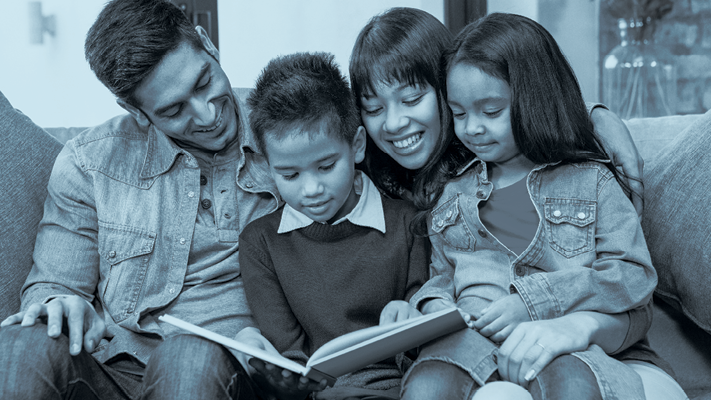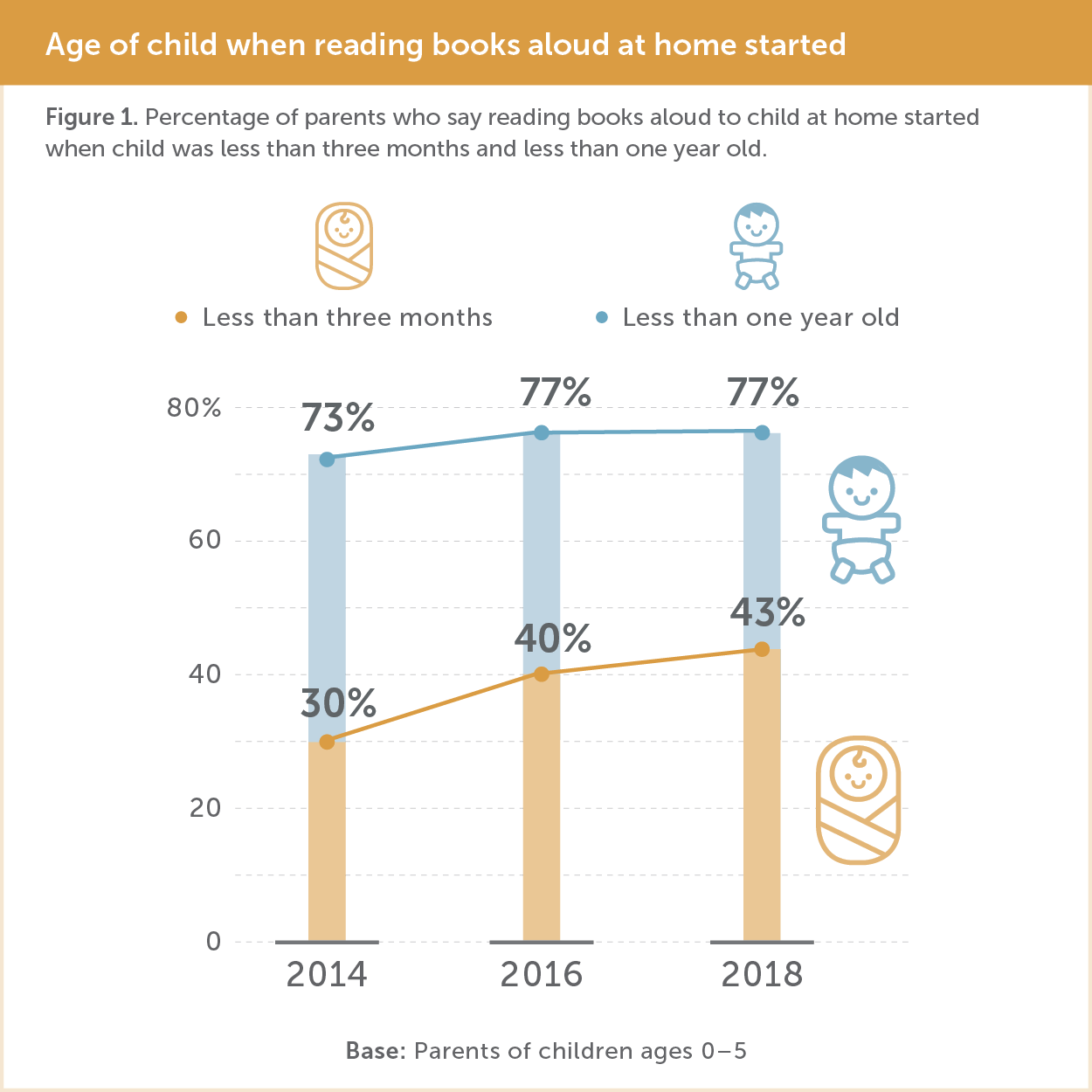
MORE PARENTS ARE READING ALOUD TO THEIR YOUNG CHILDREN
The Kids & Family Reading Report first created a benchmark of data around family read-aloud habits in 2014. This was the same year the American Academy of Pediatrics released new guidelines encouraging parents to read to their children beginning at birth, saying it enhances parent-child bonding and prepares babies’ brains for language and literacy skills.
Overall, 30% of parents with children ages five and under in the 2014 study reported reading aloud to their child before the age of three months, and 73% reported doing so before their child’s first birthday. Since then, the percentage who say their child was read to before the age of three months is up nearly 50%, with 43% saying their child was read to essentially from birth. Plus, 77% of parents with children ages five and under say read-aloud time started before their child turned one (see Figure 1).
"My mom and dad sit and we read together. We spend time together reading the books and laughing and talking."
– 8-year-old girl
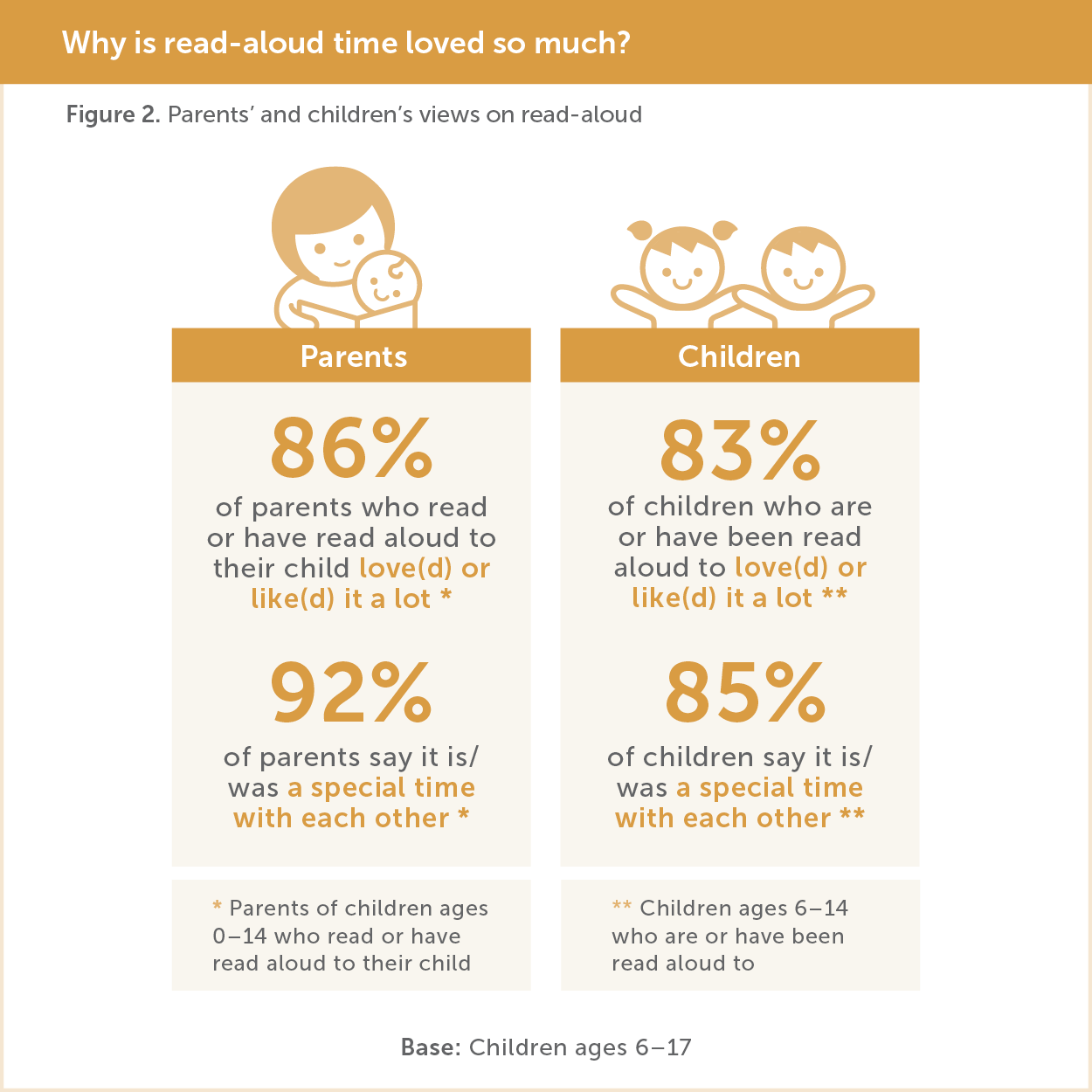
THE FAMILY READ-ALOUD EXPERIENCE IS OVERWHELMINGLY POSITIVE
More than 80% of both kids and parents across all income levels and child’s age love or like read-aloud time a lot. And among children ages 6–8 and their parents, love for read-aloud time is up eight and nine points, respectively, since 2016.
Why is read-aloud time loved so much? Parents and children say it is because it is a special time with each other (see Figure 2). And this feeling stays with children as they grow older, as a 17-year-old boy shared: “It was quality one-on-one time with my parents and I have special memories of picking out the books that they would read with me.”
Click Here For High Resolution Image
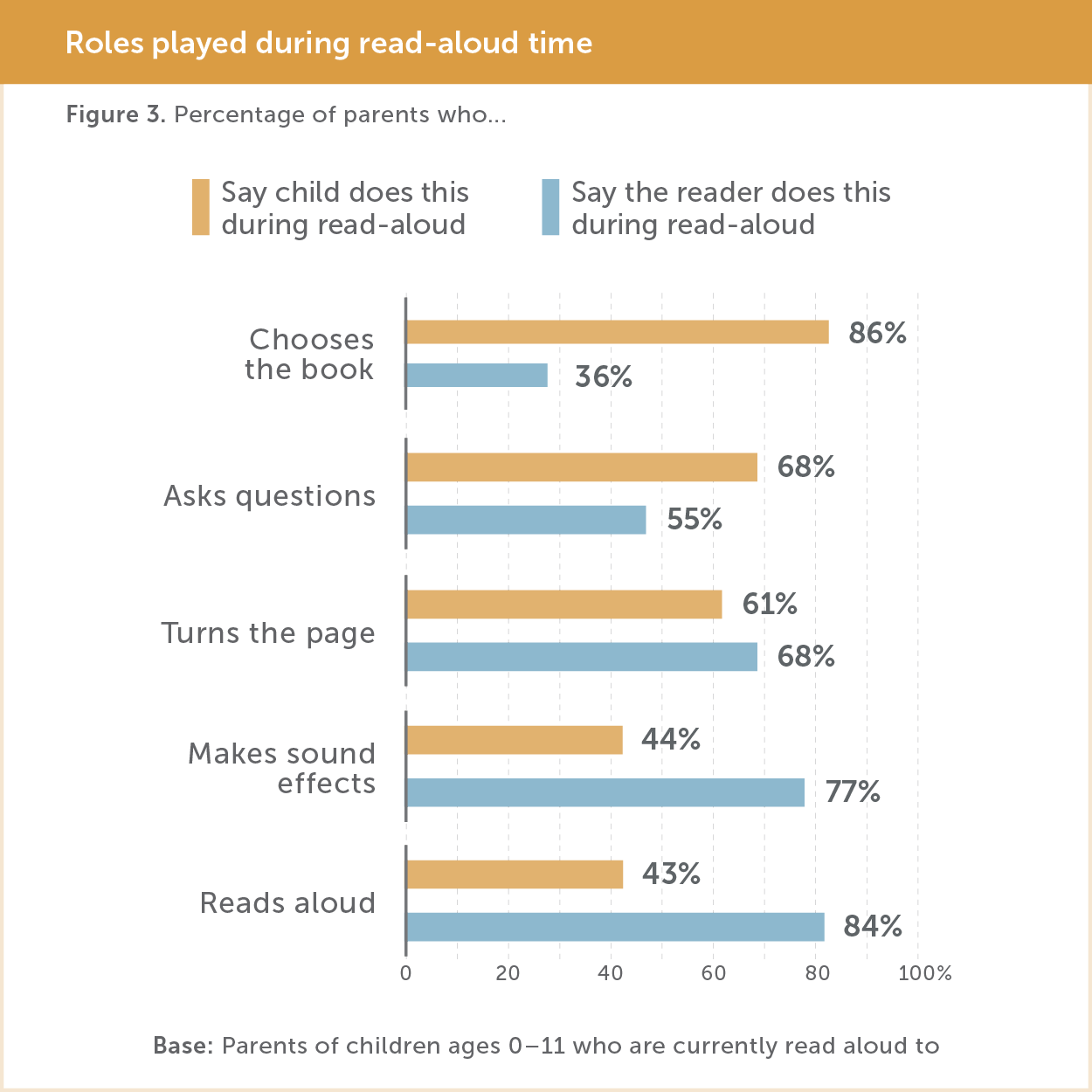
READING ALOUD IS A PARTNERSHIP
Taking a closer look at families’ habits during read-aloud time, this research reveals it is a highly interactive experience—it’s a partnership. Children choose books, kids and parents ask questions of each other, turn pages and punctuate the experience with sound effects. This interactivity fuels the child-parent bond that children express when asked to describe why they love(d) read-aloud time: “My mom and dad sit and we read together. We spend time together reading the books and laughing and talking,” an 8-year-old girl explained (see Figure 3).
It is interesting to note, though there is not a clear causal relationship, that kids ages 6–11 who actively participate in read-aloud time by asking questions or making funny noises/sound effects are more likely than other children to be frequent readers.
INTERACTIVITY DURING READ-ALOUD STARTS YOUNG
Eighty-five percent of children ask questions during read-aloud by the time they are eight, with 72% of parents asking questions when reading aloud to babies and toddlers ages two and under. About four in 10 children across age groups make sound effects and funny noises: about eight in 10 parents of kids ages 0–8 do this, and even six in 10 parents of 9–11 year-olds continue to do so. Additionally, book choice starts early with 66% of parents of 0–2 year-olds saying their child picks the books during read-aloud time, increasing to over 90% of children ages 3–11.
Click Here For High Resolution Image
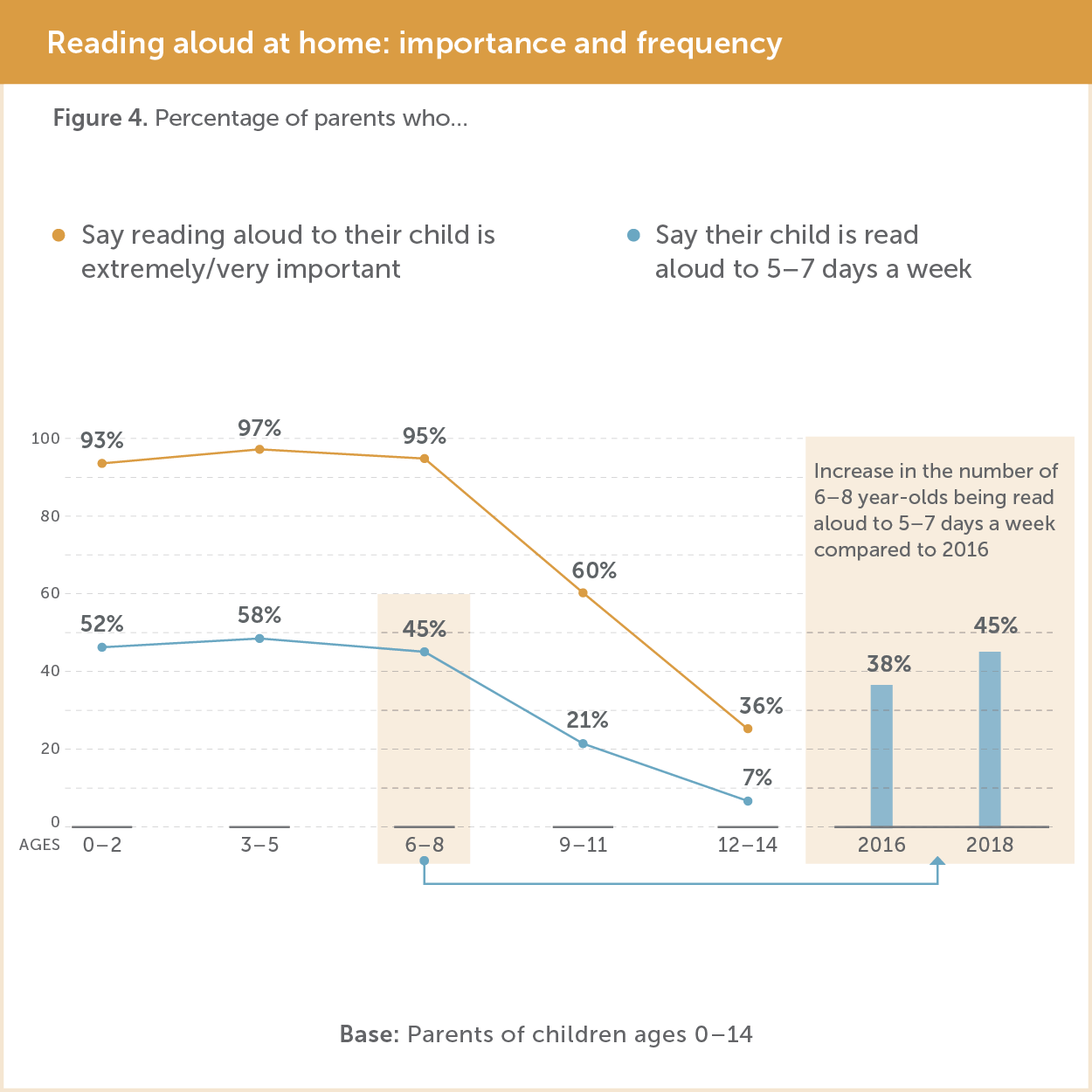
READ-ALOUD FREQUENCY IS ON THE RISE
Overall, 55% of children ages 0–5 are read books aloud at home at least five days a week, with 37% read to daily. And some of these children (52%) are read to twice a day or more. The data also show an encouraging increase in the number of 6–8-year-olds being read aloud to compared to 2016 (from 38% to 45%).
YET, READ-ALOUD FREQUENCY DIMINISHES RAPIDLY AS CHILDREN GROW OLDER
Read-aloud time is unquestionably a beloved and important family event. We also know from previous analysis through the Kids & Family Reading Report that both being read aloud to 5–7 days a week before kindergarten and continuing this habit are key factors in predicting whether or not children ages 6–11 will be frequent readers.
And yet, reading aloud peaks at age five. While a majority of families read aloud 5–7 days a week before a child enters kindergarten (55%), this percentage begins to decline dramatically with each additional year of age. This decrease is closely mirrored by parents’ view on the importance of reading aloud as children grow older (see Figure 4). When asked why read-aloud decreases or stops, parents most commonly cite the fact that children can read on their own. For many kids, becoming an independent reader corresponds with the first major decline in read-aloud frequency among the 6–8 age group.
The data also display a disparity among lower- and higher-income households. Lower-income families with children ages eight and under read aloud less frequently; 39% among families with household incomes less than $35,000 and 62% among families with incomes of $100,000 or more. Lower-income families with kids ages five and under are also less likely, at 46% compared to about seven in 10, to have received information on the importance of reading aloud from birth when their children were babies.
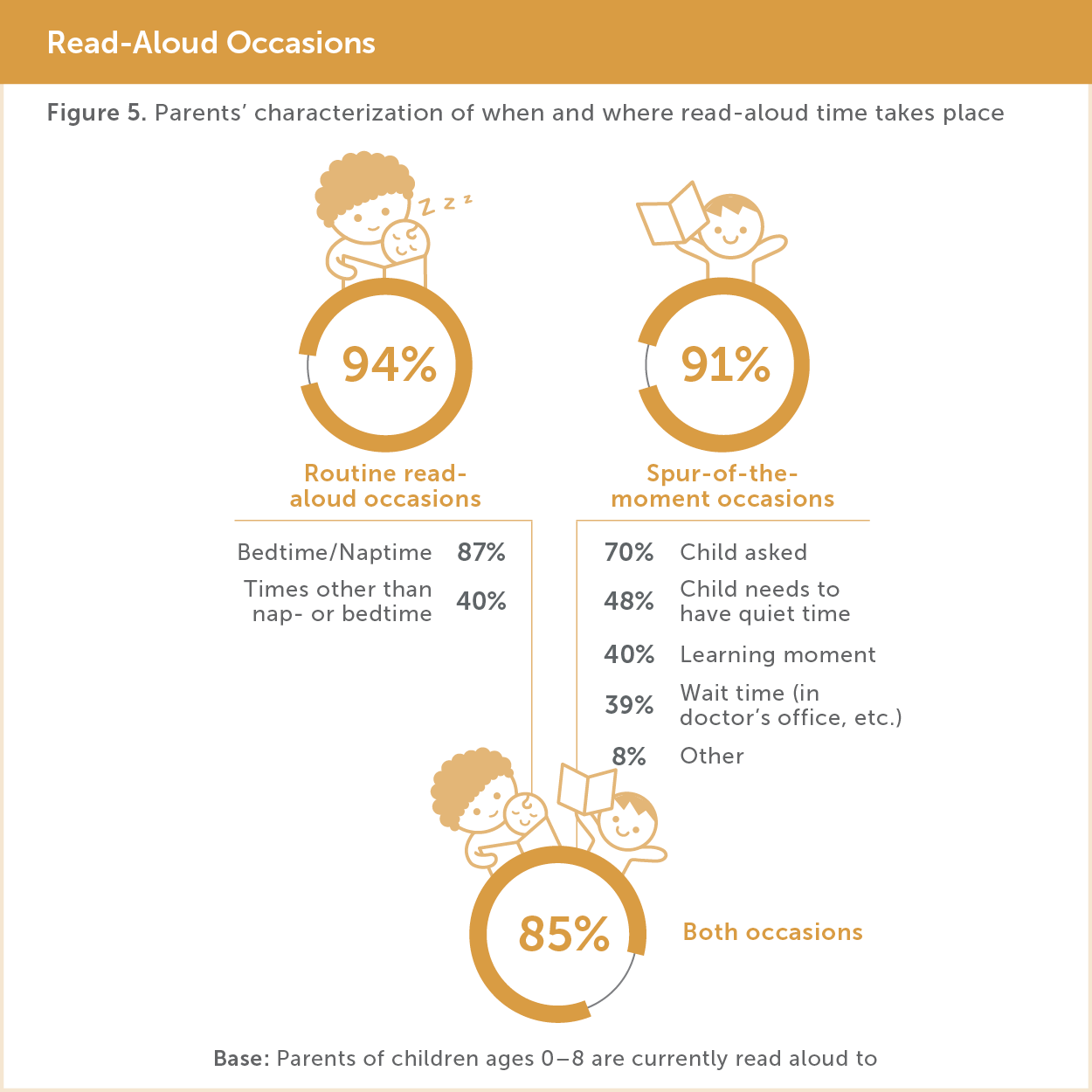
HOW TO MAKE READ ALOUD FIT IN, REGARDLESS OF AGE
Among parents of children ages 0–8 who are read aloud to, 94% include this activity as part of a routine and 91% say it is a spur-of-the-moment activity. Eighty-five percent do both. Routines predominantly include bed- and naptime but also playtime, bath time or meal time. Impromptu read-alouds center on using books to respond to a child’s wants and needs, such as learning moments and quiet time (see Figure 5). Also, while more moms read to their 0–11 year-olds than dads (93% compared to 79%), two-thirds of parents (66%) say the read-aloud experience includes more than just the reader and the child, most commonly the child’s other parent and/or siblings.
One 17-year-old girl noted, "it reaffirms the importance of reading and helped bring me closer to my parents," punctuating that reading aloud is a tool for family bonding, inspiration, and education.
"I have special memories of picking out the books that they would read with me. It was quality one-on-one time with my parents."
– 17-year-old boy
Click Here For High Resolution Image



